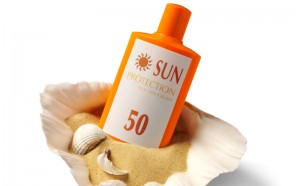 Q. I’m having problems solubilizing avobenzone (EU) & oxybenzone (EU) into the oil phase of my emulsion. Do you have any recommendations?
Q. I’m having problems solubilizing avobenzone (EU) & oxybenzone (EU) into the oil phase of my emulsion. Do you have any recommendations?
A. Generally this becomes a problem when you’re formulating high SPF products. Liquid sunscreens like homosalate (EU) (avobenzone-19% soluble) and octyl salicylate (EU) (avobenzone-21% soluble) are poor UVB sunscreens but are good solvents for avobenzone and oxybenzone. Octinoxate (octyl methoxycinnamate) (EU) can dissolve up to 26% avobenzone. Also, the presence of multivalent metals can chelate avobenzone and reduce the solubility (zinc and aluminum). A simple way to quickly screen formulations is to make only the oil phase of the formulation and test the samples at low temperatures for crystallization.
Several non-sunscreen emollients to try are:
Isopropyl Lauryl Sarcosinate
Eldew SL 205 (EU) – Ajinomoto (EU)
Phenyl Ethyl Benzoate
Extend 226 – Ashland (EU)
Phenoxycaprylate
Tegosoft XC (EU) – Evonik (EU)
C12-15 Alkyl Benzoate, Dipropylene Glycol Dibenzoate
Finsolv TPP (EU) – Innospec Performance Chemicals (EU)
The views, opinions and technical analyses presented here are those of the author or advertiser, and are not necessarily those of ULProspector.com or UL Solutions. The appearance of this content in the UL Prospector Knowledge Center does not constitute an endorsement by UL Solutions or its affiliates.
All content is subject to copyright and may not be reproduced without prior authorization from UL Solutions or the content author.
The content has been made available for informational and educational purposes only. While the editors of this site may verify the accuracy of its content from time to time, we assume no responsibility for errors made by the author, editorial staff or any other contributor.
UL Solutions does not make any representations or warranties with respect to the accuracy, applicability, fitness or completeness of the content. UL Solutions does not warrant the performance, effectiveness or applicability of sites listed or linked to in any content.



Hello George
How do you evaluate Avobenzone low temperature oil test?
I heated all the oils to dissolve Avobenzone and then frozen at -15C for 24 hours.
After taking out and leaving it at room temperature, there is powder precipitation, is it not suitable for powder precipitation?
looking forward to your reply
Thank you very much